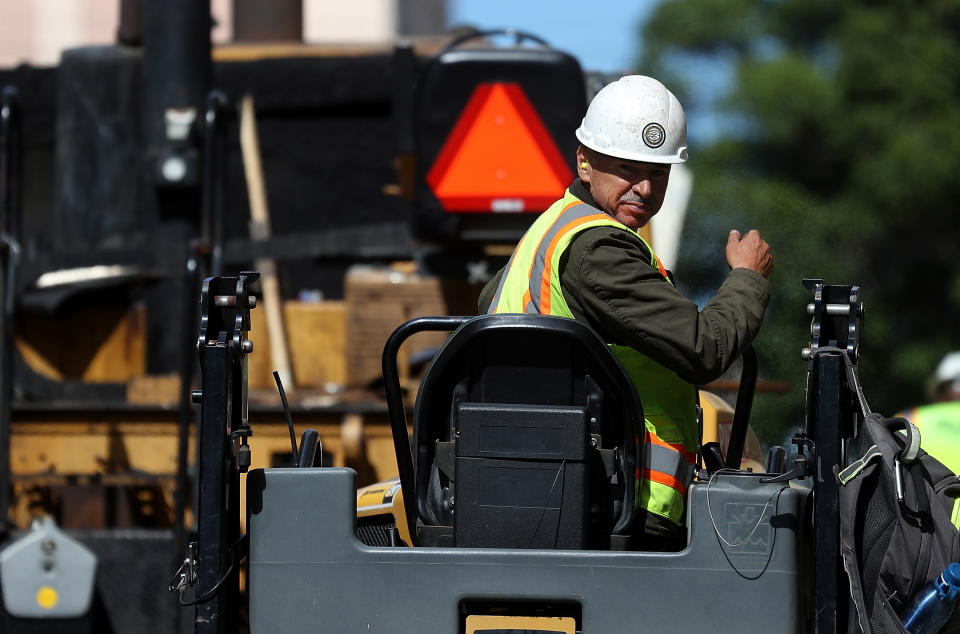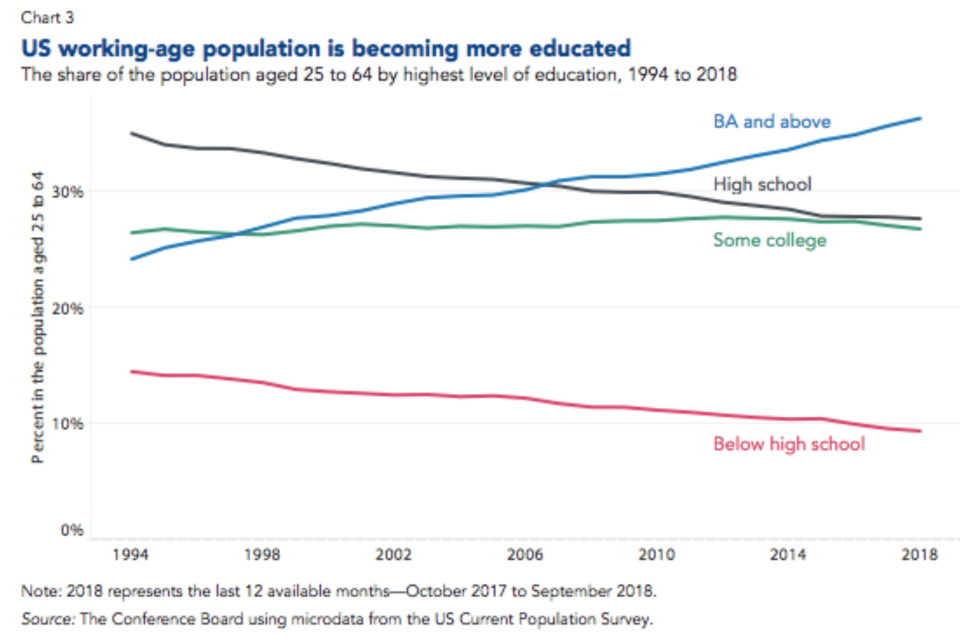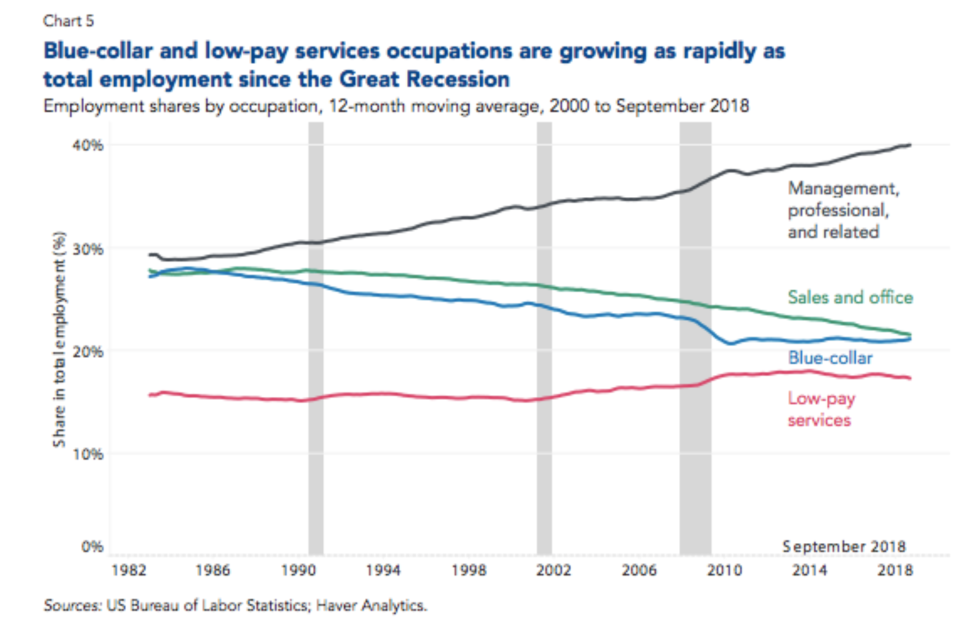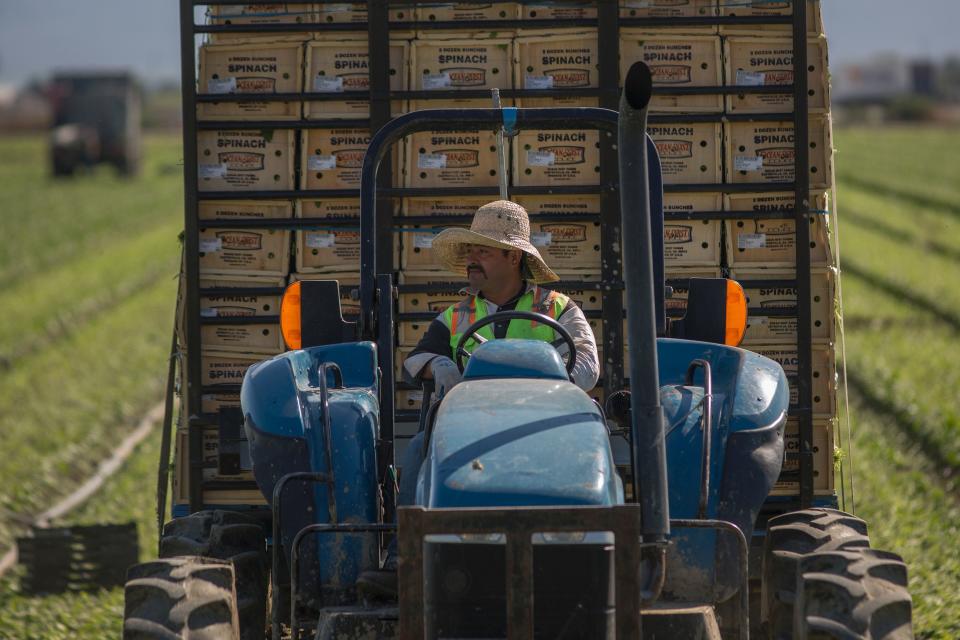America is running low on blue-collar workers

The U.S. is currently dealing with a very tight labor market. And blue-collar jobs, in particular, are experiencing an acute worker shortage.
The Conference Board, a nonprofit research organization, defines blue-collar occupations as “construction, extraction, farming, installation, maintenance, repair, production, transportation, and material moving, as well as low-pay services such as health care support, protective service, food preparation and serving, building and grounds cleaning, and personal care and service occupations.”
In the chart below, the lines in blue and green (i.e., white-collar occupations) have a higher unemployment rate than the lines in red, gray, and black (i.e., blue-collar occupations).

‘Three big trends happening simultaneously’
Conference Board Chief Economist Gad Levanon told Yahoo Finance that there are “three big trends happening simultaneously” causing the relatively shrinking pool of workers: Demographics, education, and continued demand for services.
“The baby boom generation is much larger than the generations before and after,” Levanon said of the demographic aspect. “Now is the time they are retiring in large numbers.”
In terms of education, blue-collar labor markets are tight is because more and more Americans are going to college. Since the Financial Crisis, “the share of 23- to 24-year-olds with a bachelor’s degree has been rising sharply,” the Conference Board reported. Those with a bachelor’s degree are less likely to pursue a blue-collar career.

And as the economy has been expanding since the recession, the number of jobs has increased without the workers to fill the positions.
Construction job openings, specifically, are set to increase by 12% through 2026, faster than the national average. Among material moving machine operators, there will be nearly 44,000 more jobs projected in that field by 2026.
“To put it bluntly,” the Conference Board stated, “there are simply not enough people in the labor force willing to work in blue-collar jobs.”
The chart below shows how the employment rate has stayed consistent since 2008 as demand for services has continued.

A shrinking pool of blue-collar workers
For those without college degrees, some are kept out of the blue-collar workforce for different reasons. According to the Conference Board, “less educated Americans are much more likely not to be in the labor force due to disability.” The organization partially attributes the increase in disability rates to the U.S. opioid epidemic, especially among those without a bachelor’s degree.
Other possible “deterrents” from blue-collar occupations the general stigma that blue-collar jobs are perceived to be for less educated people, immigration policy changes, the rise of technology.
The stigma attached to blue-collar jobs is “a societal issue,” Levanon said. “One thing that could help is to shift the focus of the education system from just preparing as many college students as possible to” preparing young people for “other career choices.”
As for immigration policy, the Trump administration’s enforcement has reduced the availability of undocumented immigrant workers in occupations — such as construction, agriculture, production, and cleaning-related fields — that are typically blue-collar.

“Almost all undocumented workers are in occupations that are in blue-collar or low-pay services,” Levanon said. “The same occupations that are now experiencing fast-wage growth.”
As for technology, the Conference Board advocates leaning into that trend to fix the labor shortage.
“In such an environment,” the report concluded, “automating further and raising labor force participation are essential for business and the economy to meet demand.”
Adriana is an associate editor for Yahoo Finance. Follow her on Twitter @adrianambells.
READ MORE:
Follow Yahoo Finance on Twitter, Facebook, Instagram, Flipboard, LinkedIn, YouTube, and reddit.
